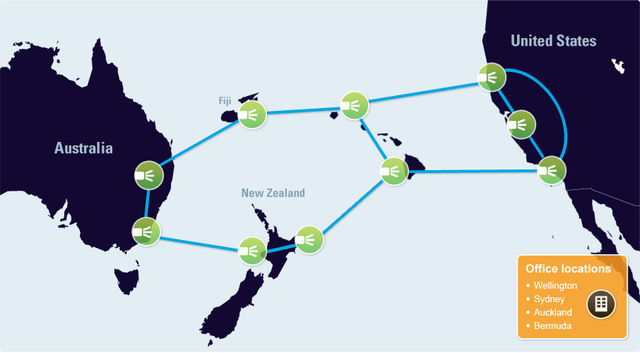Next year, the University of Hawaii will begin to upgrade its high-speed Internet pipeline, thanks to a $4.6 million grant from the National Science Foundation. ADVERTISING Next year, the University of Hawaii will begin to upgrade its high-speed Internet pipeline,
Next year, the University of Hawaii will begin to upgrade its high-speed Internet pipeline, thanks to a $4.6 million grant from the National Science Foundation.
The five-year grant will cover the costs associated with operating and upgrading the international research and education network, which includes a series of undersea cables.
Australia’s Academic and Research Network connects Australia to New Zealand, Fiji, Hawaii and the West Coast of the U.S. via the submarine Southern Cross Cable Network.
The network, which is not available to the general public, connects to Hawaii in two spots — Kahe Point on Oahu and Spencer Beach near Kawaihae on Hawaii Island.
The upgrades will boost the capacity for the University of Hawaii research network from 40 gigabits per second to 100, said Gwen Jacobs, UH director of cyber-infrastructure.
“One of the big reasons the National Science Foundation invests in us is because (UH) is such a huge scientific asset,” she said. “
More and more, sharing data between scientists around the world is how research is done, she said. And as technology improves and the ability to capture data grows, so does the need for a high-speed backbone to share that data.
The Panoramic Survey Telescope and Rapid Response System atop Haleakala on Maui alone generates 400 terabytes of data in a single evening, she said. That’s equivalent to the data capacity of 6,250 64-gigabyte iPhones.
“The Pan-STARRS project generates a lot of data that is brought down and processed here in our data center. Then it’s distributed and reused by the astronomy community all over the world,” Jacobs said. “… You’ve got huge amounts of data like that flowing all over these international networks.”
Roy Gal, an astronomer with UH’s Institute for Astronomy, estimated the telescopes on Mauna Kea can generate about a terabyte of data in an average evening.
“Telescopes like the Subaru, which just had a new camera installed, the Hyper Suprime-Cam, a single image it takes with its massive 870-megapixel camera, each image is probably 100 gigabytes. It’s huge,” he said. “Those kinds of large cameras are going to be more and more common as time goes on.”
In addition to data collected by the telescopes, high-speed networks also are needed for communications, so that scientists can talk via videoconferencing with the operators of the telescopes — or even operate the telescopes themselves and receive the data that is collected by them.
“Some telescopes, like the Keck, can be operated from California,” Gal said. “And when you’re trying to ensure that your data is what you want, you don’t want to lose any time, so a high-speed network is very important.”
A rough estimate places the cost of operating the telescopes on Mauna Kea at about $1 per second, Gal said, so if an operator has to wait a minute for a high-resolution image to download, “you’ve just wasted 60 bucks waiting for that image.”
At an April 28 celebration at the Australian Embassy in Washington, D.C., Australian ambassador to the U.S. Kim Beazley explained that the collaboration between UH and Australia had been long and fruitful, supporting a wide range of research.
“The project builds on a rich history of research collaboration between our two nations, and will greatly expand opportunities to work together in areas of mutual interest, including astronomy, global climate issues, biodiversity, coral reef study and medicine,” he said.
One link of the network connects from Australia to New Zealand to Hawaii and on to Los Angeles. The second connects Australia to Oahu to Seattle. The West Coast links go on to open up access across the U.S. and Asia.
Email Colin M. Stewart at cstewart@hawaiitribune-herald.com.



